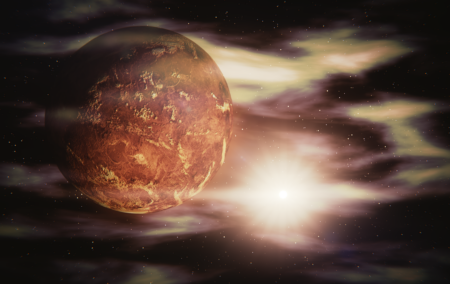Astronomers have potentially detected signs of life on Venus, the second planet from the Sun.
Telescopes in Chile and the US state of Hawaii detected the presence of a gas, phosphine, in the planet’s atmosphere, it was announced on Monday. Phosphine is known to only be a by-product of human industrial activity or due to microbes which live in oxygen-free environments.
According to Jane Greaves, a professor at the University of Cardiff and lead author of a paper on the discovery: ‘The reason for our excitement is that phosphine gas on Earth is made by microorganisms that live in oxygen-free environments. And so there is a chance that we have detected some kind of living organism in the clouds of Venus.’
Venus has always been fairly low-down on the list of objects in the Solar System that scientists believed could harbour life, with Mars and the large moons that orbit Jupiter and Saturn, such as Europa or Titan, being seen as more likely candidates.
Venus suffers from a runaway greenhouse effect and the conditions on the surface are hellish, with temperatures hot enough to melt lead. Air pressure on the surface is also equivalent to that found nearly a kilometre underwater on Earth.
However, scientists believe that the planet could once have harboured life when conditions were more hospitable, and this life could have migrated to the upper atmosphere of the planet. Conditions there are more temperate, with pressure closer to what you find on Earth and temperatures as low as 30 degrees Celsius. The discovery of the gas could well mean this hypothesis is correct.
If the presence of life is confirmed on Venus this could have serious implications for how humans think about our place in the universe. If there is life on our nearest planetary neighbour then life is possibly widespread through the cosmos.
Image by GooKingSword from Pixabay

